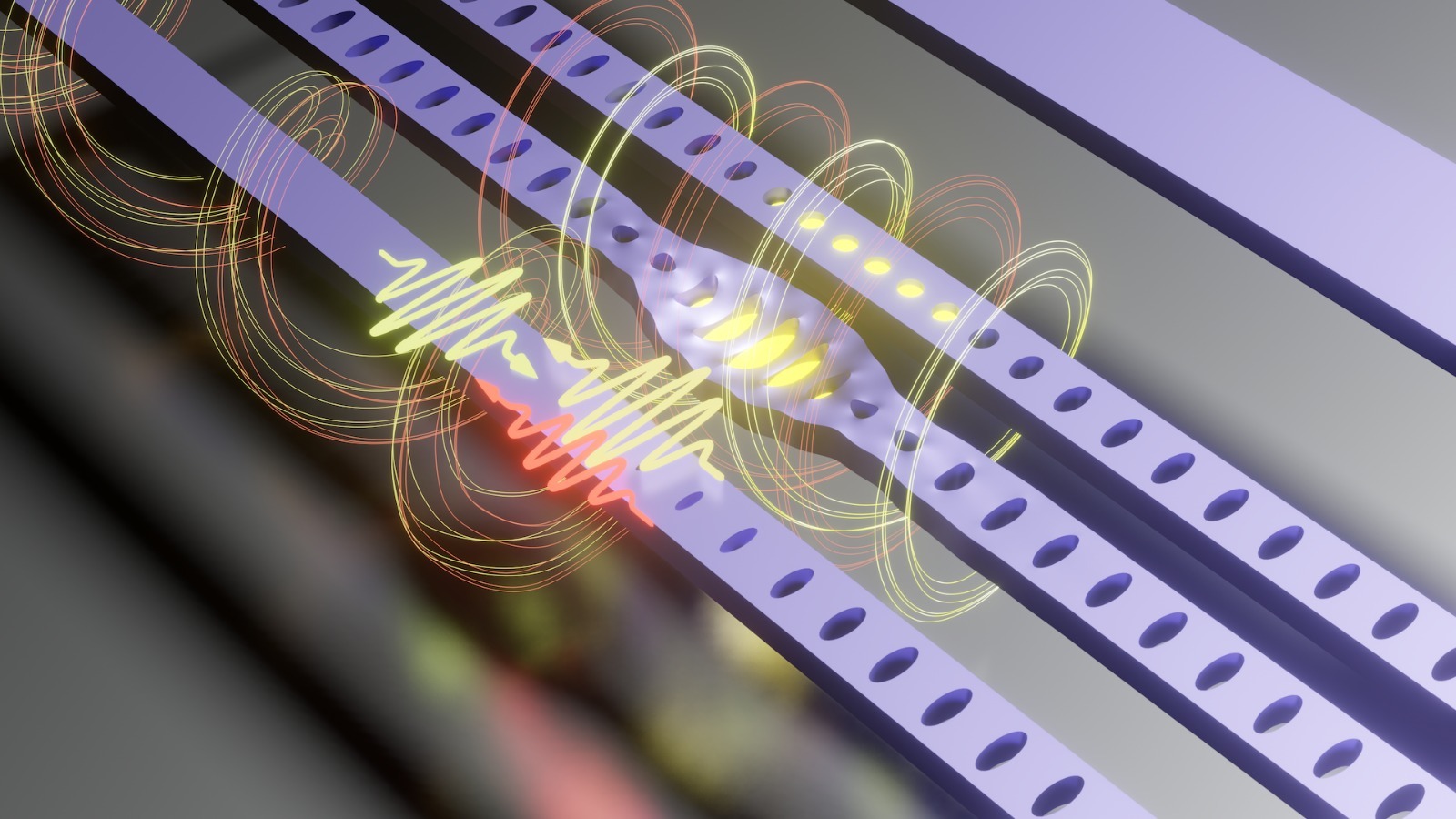October 2, 2023 Article “Dissipative Optomechanics in High-Frequency Nanomechanical Resonators” Published in Nature Communications
iPhD researchers have an article published in Nature Communications and attract attention from the scientific community

Text by Greta Garcia (collaboration: André Primo, Pedro Pinho and Thiago Alegre)
Illustration by André primo
A recently published study in the journal Nature Communications is drawing attention and opening new doors for the advancement of quantum communication in Brazil.
Titled “Dissipative Optomechanics in High-Frequency Nanomechanical Resonators”, this article represents a breakthrough in the quest for solutions that can propel future quantum technologies.
The Bridge Between Microwaves and Optics
The study, conducted by researchers André Primo, Pedro Pinho, and professors Gustavo Wiederhecker and Thiago Alegre from Unicamp in collaboration with Dr. Rodrigo Benevides from ETH Zurich and Prof. Simon Gröblacher from TU Delft, focuses on a crucial scientific challenge: how to transmit information coherently between microwaves and optics. This capability is a fundamental element for the development of advanced quantum networks that can transform computing and communication.
High-Frequency Nanomechanical Resonators
The key to the success of this study lies in the use of nanometric optomechanical cavities. These tiny devices allow the interaction of high-frequency mechanical vibrations and infrared light, at wavelengths widely used by the telecommunications industry, paving the way to connect radically different frequency domains. This is particularly essential for the future of quantum computing, as these interactions are crucial for the effective implementation of quantum networks.
“Nanomechanical resonators would act as bridges between superconducting circuits and optical fibers. Optical fibers have the advantage of transmitting information over long distances with minimal noise and signal loss, while such circuits are currently one of the most promising foundational technologies for quantum computing”, explains Thiago Alegre, one of the study’s authors.
Dissipative Optomechanics: An Innovative Approach
One of the central innovations of this study is the introduction of dissipative optomechanics. While traditional optomechanical devices rely on purely dispersive interactions, the study demonstrates that the dissipative approach, where photons are scattered directly from a waveguide to a resonator, offers greater control in acousto-optic interaction.
Breaking Frequency Barriers
So far, dissipative optomechanical interaction had only been demonstrated at low mechanical frequencies. However, this study is the first demonstration of a dissipative optomechanical system operating in a regime where the mechanical frequency exceeds the optical dissipation rate. This has significant implications for the transfer of quantum states between acoustic (microwave) and photonic (optical) domains.
The team achieved a two-order-of-magnitude jump in mechanical frequency and a tenfold increase in dissipative optomechanical coupling rate compared to previous research. These achievements represent a significant advancement in the field of optomechanics and open doors for the development of even more effective devices.
The Path Forward
It’s important to highlight the contribution of the researchers from the iPhD program; students André G. Primo, Pedro V. Pinho, in addition to professors Gustavo S. Wiederhecker and Thiago P. Mayer Alegre are principal investigators or associated with the thematic project. The impact of this study cannot be underestimated. In addition to its direct implications for the future construction of quantum networks, it also establishes a solid foundation for further fundamental research. Future advancements may enable the individual manipulation of mechanical modes and help mitigate optical nonlinearities and absorption in optomechanical devices.
In summary, the article “Dissipative Optomechanics in High-Frequency Nanomechanical Resonators”, published in Nature Communications, represents a significant milestone in scientific research, offering valuable insights into overcoming fundamental barriers in information transduction between microwave and optical domains. Its findings have the potential to shape the future of quantum computing and communication, reflecting the commitment of the iPhD program to promote excellence in scientific research.
Click here to access the article published in Nature Communications. If you would like to read the original article for more information, click here.



